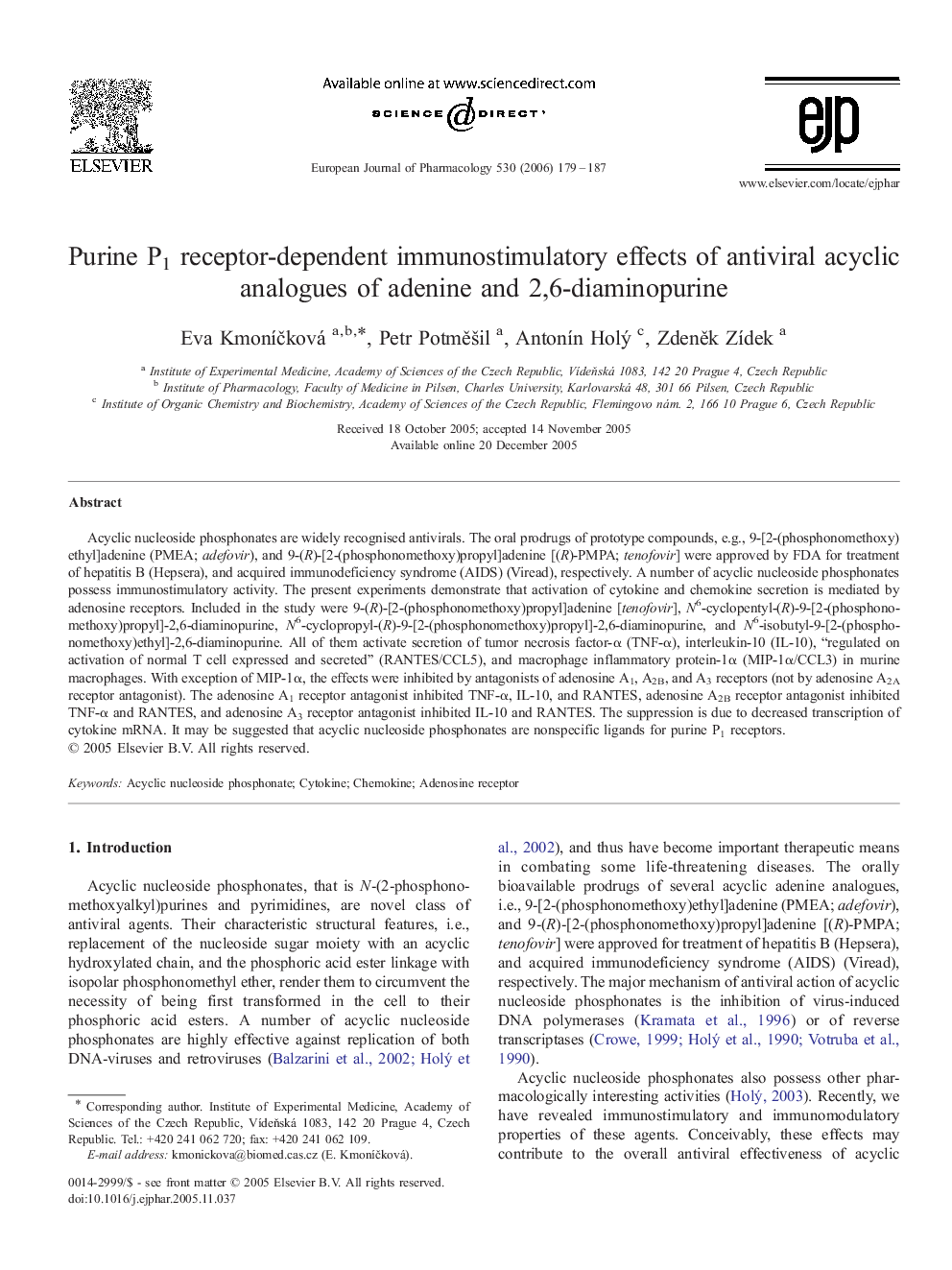| Article ID | Journal | Published Year | Pages | File Type |
|---|---|---|---|---|
| 2537560 | European Journal of Pharmacology | 2006 | 9 Pages |
Acyclic nucleoside phosphonates are widely recognised antivirals. The oral prodrugs of prototype compounds, e.g., 9-[2-(phosphonomethoxy)ethyl]adenine (PMEA; adefovir), and 9-(R)-[2-(phosphonomethoxy)propyl]adenine [(R)-PMPA; tenofovir] were approved by FDA for treatment of hepatitis B (Hepsera), and acquired immunodeficiency syndrome (AIDS) (Viread), respectively. A number of acyclic nucleoside phosphonates possess immunostimulatory activity. The present experiments demonstrate that activation of cytokine and chemokine secretion is mediated by adenosine receptors. Included in the study were 9-(R)-[2-(phosphonomethoxy)propyl]adenine [tenofovir], N6-cyclopentyl-(R)-9-[2-(phosphonomethoxy)propyl]-2,6-diaminopurine, N6-cyclopropyl-(R)-9-[2-(phosphonomethoxy)propyl]-2,6-diaminopurine, and N6-isobutyl-9-[2-(phosphonomethoxy)ethyl]-2,6-diaminopurine. All of them activate secretion of tumor necrosis factor-α (TNF-α), interleukin-10 (IL-10), “regulated on activation of normal T cell expressed and secreted” (RANTES/CCL5), and macrophage inflammatory protein-1α (MIP-1α/CCL3) in murine macrophages. With exception of MIP-1α, the effects were inhibited by antagonists of adenosine A1, A2B, and A3 receptors (not by adenosine A2A receptor antagonist). The adenosine A1 receptor antagonist inhibited TNF-α, IL-10, and RANTES, adenosine A2B receptor antagonist inhibited TNF-α and RANTES, and adenosine A3 receptor antagonist inhibited IL-10 and RANTES. The suppression is due to decreased transcription of cytokine mRNA. It may be suggested that acyclic nucleoside phosphonates are nonspecific ligands for purine P1 receptors.
